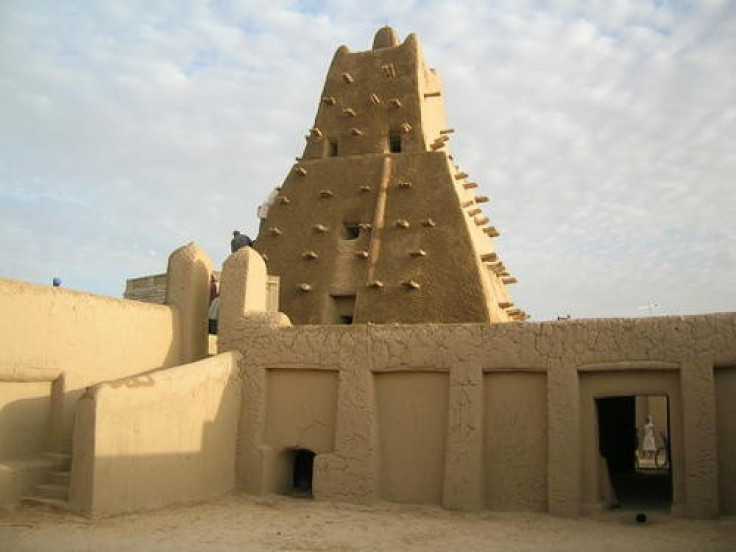UN Puts Fabled City Of Timbuktu On Endangered Sites List Amid Conflict In Mali

The United Nations cultural agency has added the legendary city of Timbuktu to a list of historically significant sites in danger as rebel factions skirmish in northern Mali.
The Malian government had requested that the United Nations Education, Science and Culture Organization (Unesco) add the centuries-old city to the List of World Heritage in Danger, along with the Tomb of Askia built in the late 15th century in the northern city of Gao.
The decision aims to raise cooperation and support for the sites threatened by the armed conflict in the region, Unesco said in a statement Thursday.
There is concern that such objects, notably important ancient manuscripts, be looted and smuggled abroad by unscrupulous dealers, it added.
Following a military coup in March, the West African nation has been embroiled in an insurgency among ethnic Tuareg separatists in the north, with the resulting instability allowing the incursion of Islamist militants from North Africa.
The Tuareg rebels, previously allied with local militant Islamist group Ansar Dine, took over the vast northern half of Mali, which includes the cities of Timbuktu and Gao, renaming it Azawad.
After the rebels, under the banner of the National Movement for the Liberation of Azawad (MNLA), declared the captured territory an independent state in early April, Ansar Dine split with the group over differences in the implementation of Islamic law.
The Tuareg rebels are of a traditionally nomadic people whose religion is a mixture of animism and Islam, whereas Ansar Dine believes in strict adherence to Sharia law.
Ansar Dine, allied with the North African-based Al Qaeda in the Islamic Maghreb under the banner of the Unity Movement for Jihad in West Africa (MUJAO), pushed the MNLA out of Timbuktu and Gao Wednesday.
Remnants of a Forgotten Empire
Timbuktu is believed to have first been settled toward the end of the fifth century as a seasonal camp for Tuareg nomads. Eventually it became a permanent settlement, with its golden age during the 15th and 16th centuries, as part of the Songhai Empire, when the city amassed great wealth from the trans-Saharan trade of gold and salt and became a cultural center for Islamic scholars.
The city was fabled among European explorers, many of whom perished trying to reach it over the vast expanse of the Sahara Desert.
During this same period Askia Mohamed, the emperor of Songhai, commissioned the construction of a 17-meter tall pyramidal structure in what was then the empire's capital of Gao. which became known as the Tomb of Askia.
It bears testimony to the power and riches of the empire that flourished in the 15th and 16th centuries, Unesco said of the structure.
© Copyright IBTimes 2024. All rights reserved.











